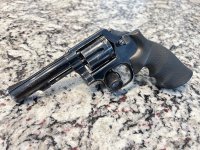I'm not so sure. It really depends on how they manage the modularity.
I got out as the M16A2 was entering service and in my experience it was a retrograde step promoted by the USMC and prioritizing shooting at what was effectively beyond both its effective range and in excess of the need.
It came at the expense of excessive weight and degraded balance and handling compared to the light and handy M16A1, which was well suited to hitting torso sized targets out to 350m.
The M4 was the inevitable correction, this time driven in large part by the needs of mechanized troops and in part by the needs of close quarters combat.
However, they quickly loaded that short handy carbine down with rails and tactical stuff that may or may not provide any value on a particular mission.
The civilian shooters with their M4geries quickly started adding all kinds of a tacticool stuff to their carbines. I really enjoyed shooting against them in tactical rifle matches as they'd take a ligh fart handling carbine and and turn it into a heavy, slow, poorly balanced carbine that adversely impacted their ability to rapidly and accurately engage multiple targets.
Depending on the anticipated ranges and targets I'd use:
an SP1, or M16A1 clone;
an XM177E2 clone (with a slightly heavier barrel);
or a 16" pencil barrel carbine with triangular handguards and a fixed entry stock.
They optimized long range accuracy over close quarters speed ans handling to some extent but all of them were lighter and faster than a tarted up M4gery.
And I really enjoyed consistently beating them with my low tech antiques.







